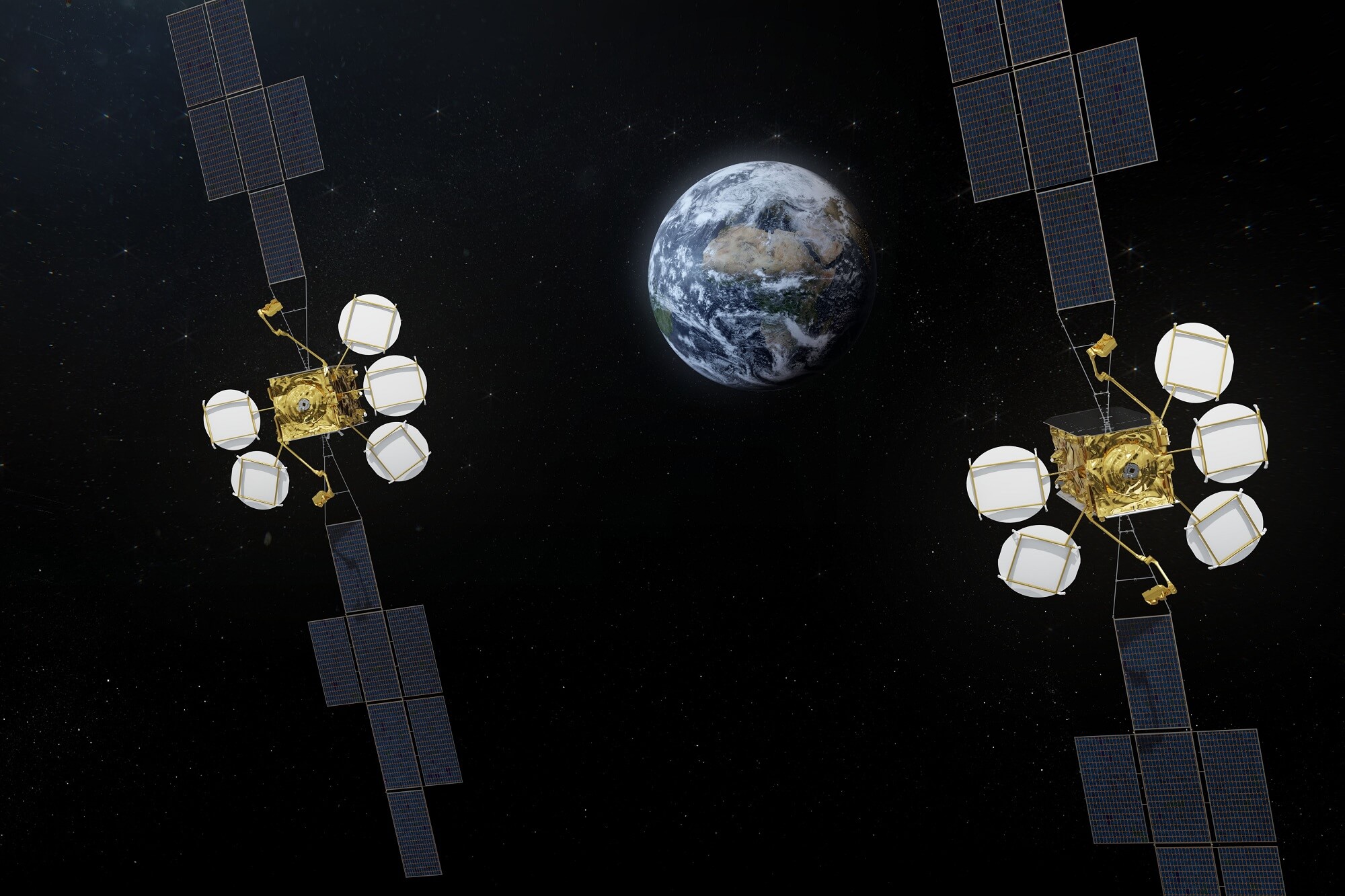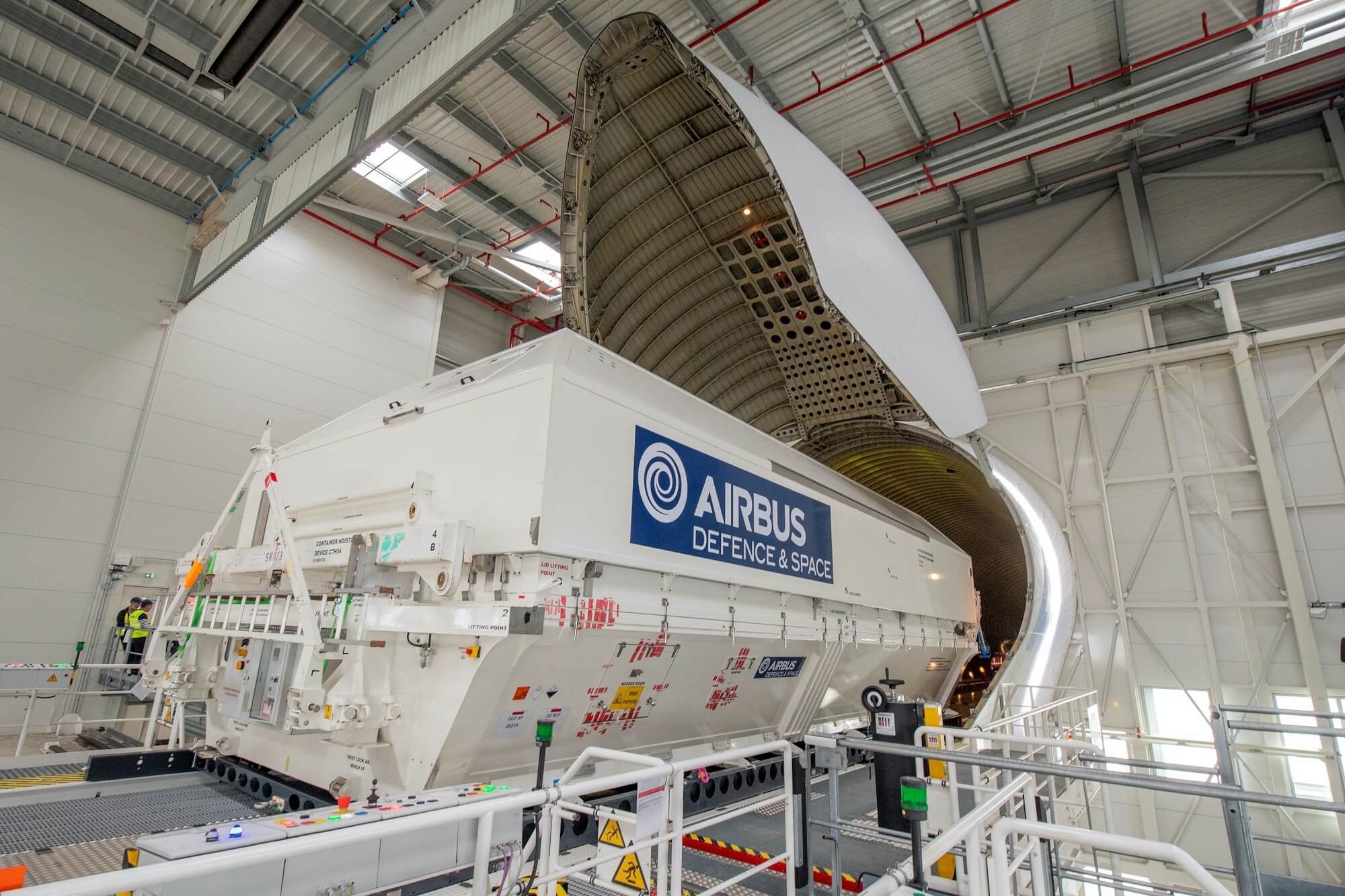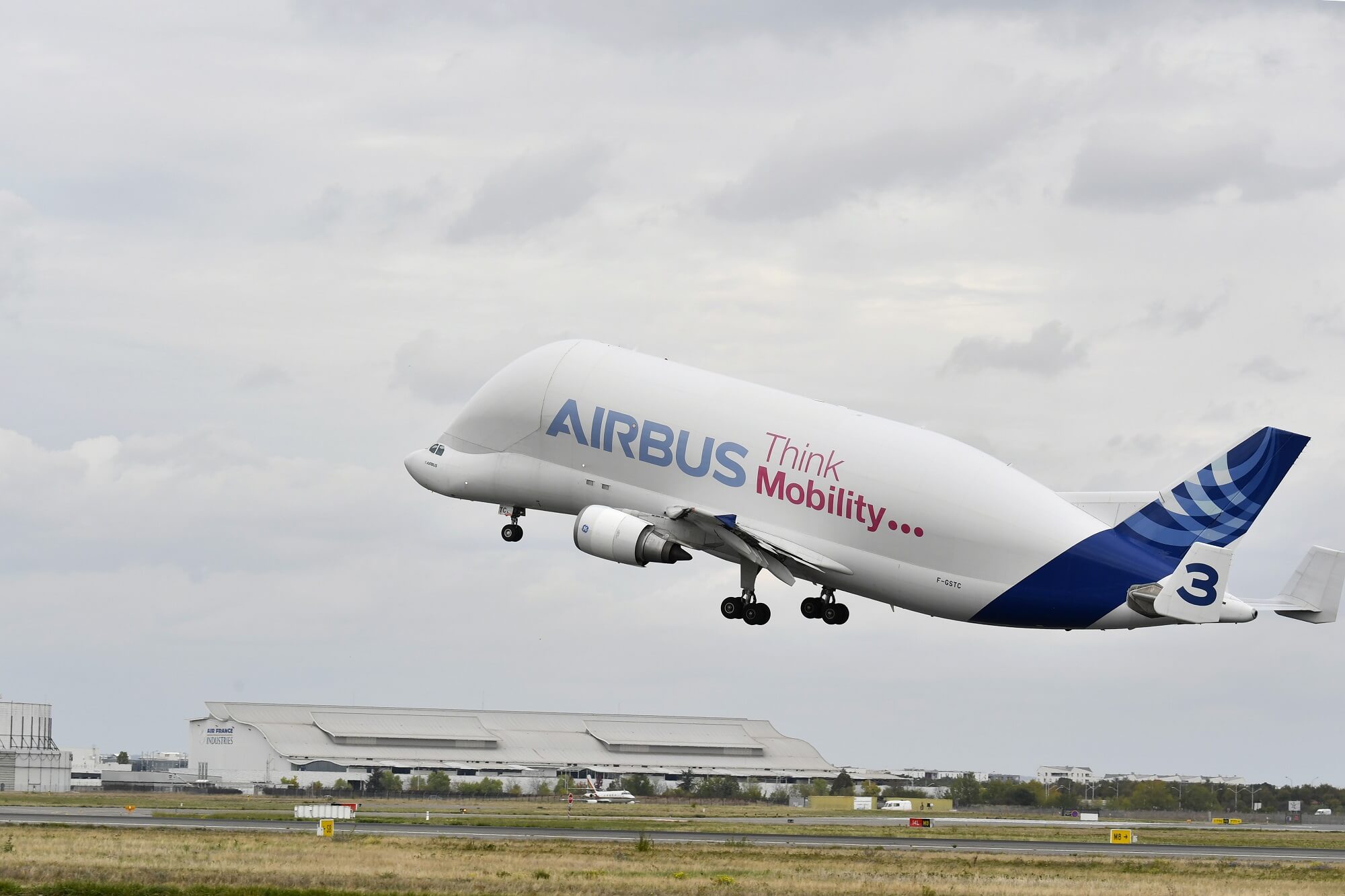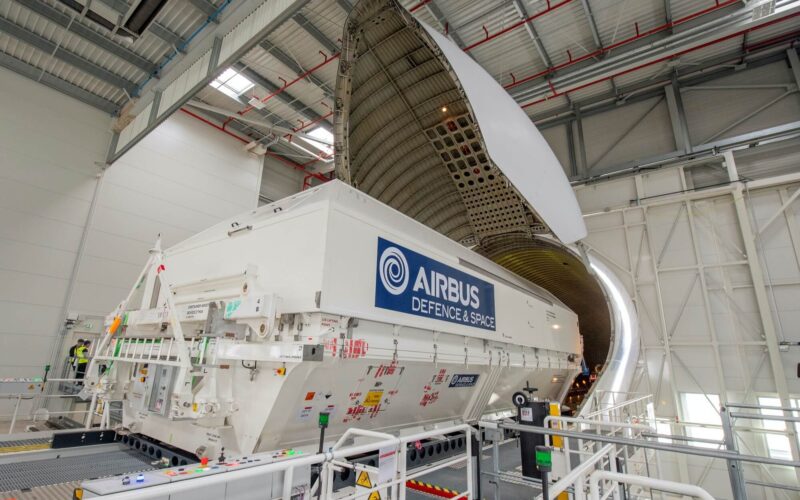Airbus has announced that it has recently used one of its BelugaST (Super Transporter, ed.-) aircraft to deliver its second Airbus-built Hotbird 13G satellite for Eutelsat to the Kennedy Space Center in Florida.
According to the manufacturer, delivery of the HOTBIRD 13G satellite was completed just a few hours after its twin, the HOTBIRD 13F, was launched by a SpaceX Falcon 9 rocket on October 15, 2022.
The flight, which departed from Toulouse in France, marked the BelugaST’s first operation to the US since 2009 when it delivered the European “Tranquility” module of the International Space Station to the Kennedy Space Center.
Reflecting Airbus’ long-term goals for decarbonization, the Beluga used 30% Sustainable Aviation Fuel (SAF) during its latest mission, Airbus said in a statement released on October 17, 2022.
“The ability of Airbus to field an autonomous European solution is underscored by the transportation of our satellites in the unique Beluga aircraft – a true example of pan-Airbus synergies,” the head of Airbus space systems Jean-Marc Nasr said.
Both the HOTBIRD 13F and the HOTBIRD 13G are considered the first members of the new “Eurostar Neo” family of Airbus telecommunications satellites. Once both spacecraft reach the designated orbital positions, they are expected to expand television broadcasting with more than a thousand channels across various regions, including Europe, Northern Africa, and the Middle East.
“They will also enhance Eutelsat’s ability to provide connectivity for more than 135 million people, as they replace three Eutelsat satellites currently in orbit,” Airbus said.

What is the BelugaST most famous for?
There is no doubt that the Airbus A300-600ST, also known as ‘the white whale of the skies’, is one of the rarest and adored planes for plane spotters as the super-sized transporter jet features one of the most voluminous cargo holds of any civil or military aircraft currently in operation.
Since 1994, when the aircraft took to the skies for its maiden flight, the A300-600ST has played a key role in Airbus’ production distribution and assembly network. Since the early days of operation, the BelugaST has been used for the transportation of various objects for several space programs. On its first space-dedicated mission in 2001, the Beluga transferred sections of the unmanned Automated Transfer Vehicle (ATV) space vehicle between Turin in Italy, to Amsterdam in the Netherlands.
Three years after, in 2004, the plane made multiple operations to Baikonur Cosmodrome in Kazakhstan to deliver the Astrium-built satellites. Then, during one of its latest missions in 2009, the cargo giant flew the Tranquility module of the International Space Station from Turin to the Kennedy Space Center in Florida.

BelugaST specifications
The A300-600ST can be praised for its spacious cargo hold, which equals 1,500 cubic meters (53,000 cubic ft), allowing the plane to carry as much as 47,000 kg (103,617 lbs.) of oversized freight.
The freighter is typically used for the air transportation of chemical tanks, various aircraft parts, and space rocket components. For instance, it is capable of flying a fuselage section of an Airbus A350 wide-body plane, the wings of the Airbus A340 aircraft, as many as 36 cars, up to 671 passengers, or seven elephants.

The white whale is powered by two General Electric CF6-80C2A8 turbofan engines, each generating a thrust of 58,000 lbs., and can reach a maximum speed of 864 kilometers per hour (537 mph) with a range of up to 4,600 kilometers without the need to refuel.

